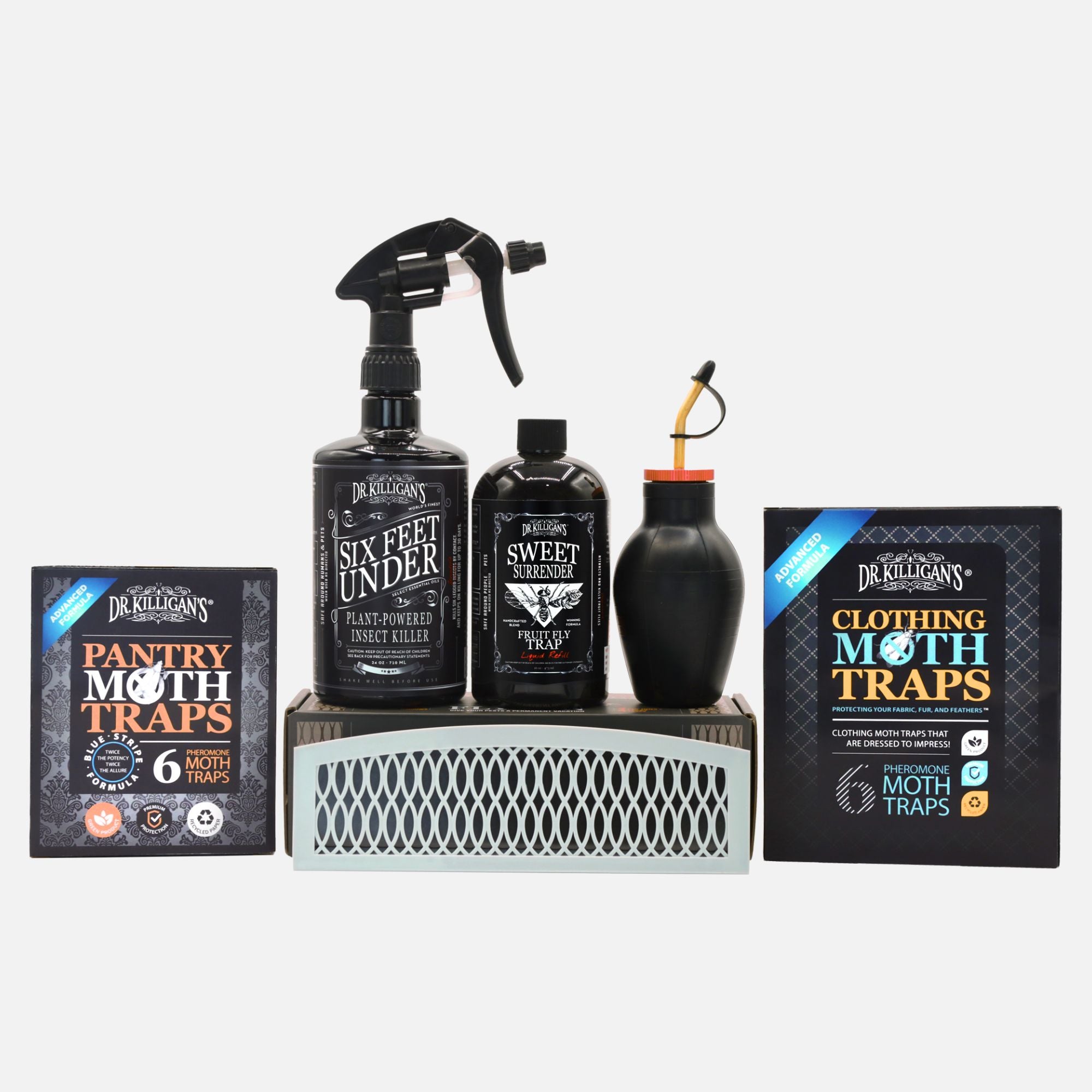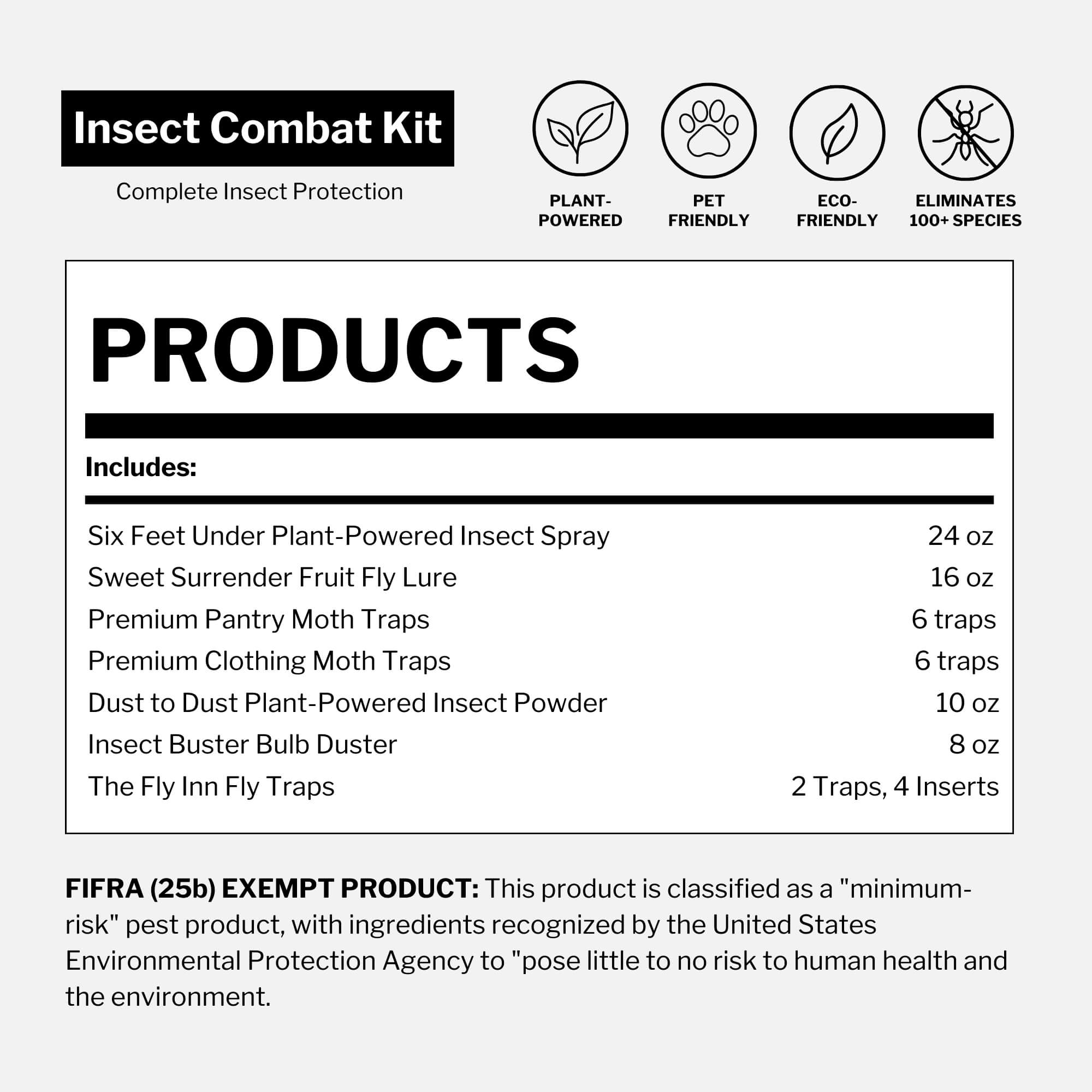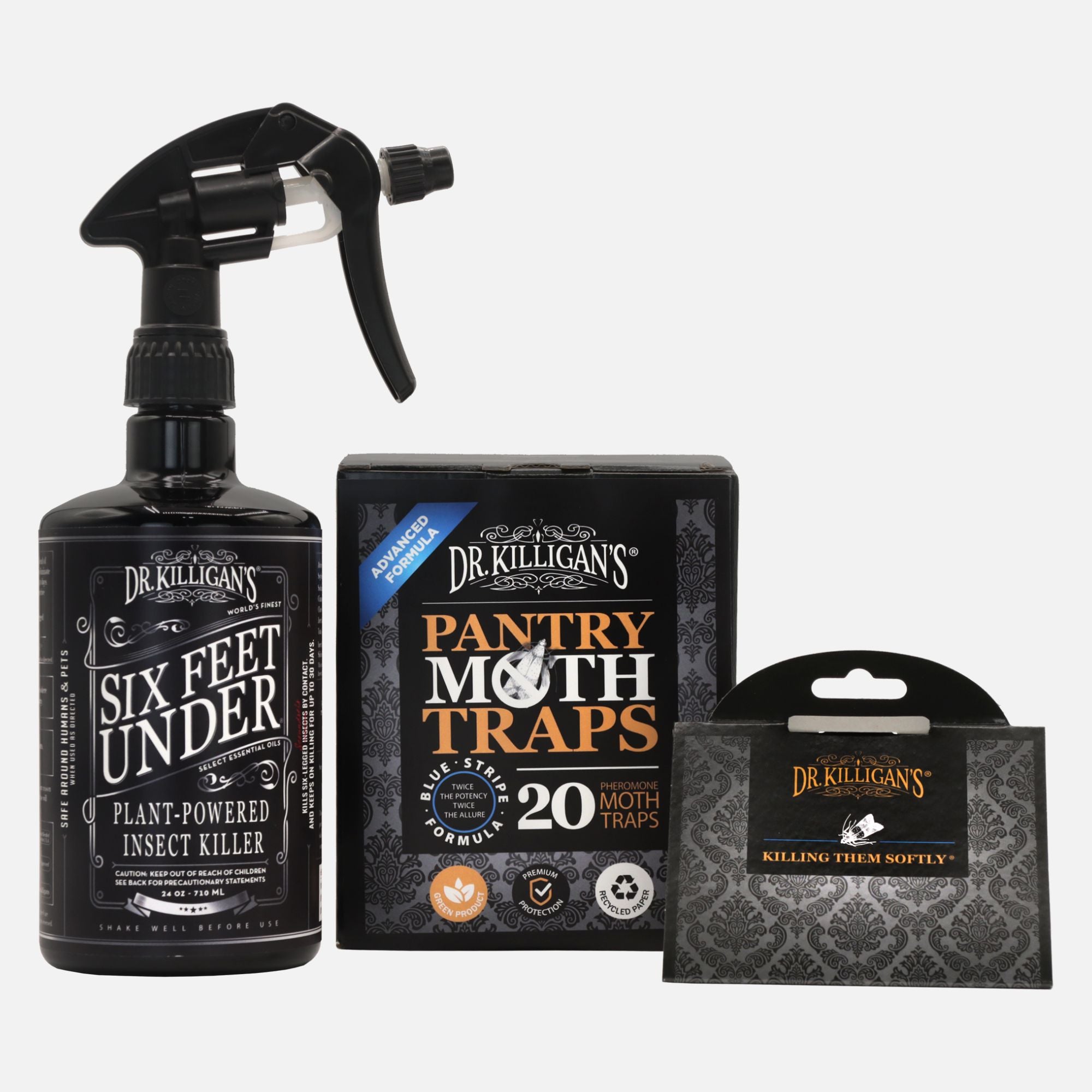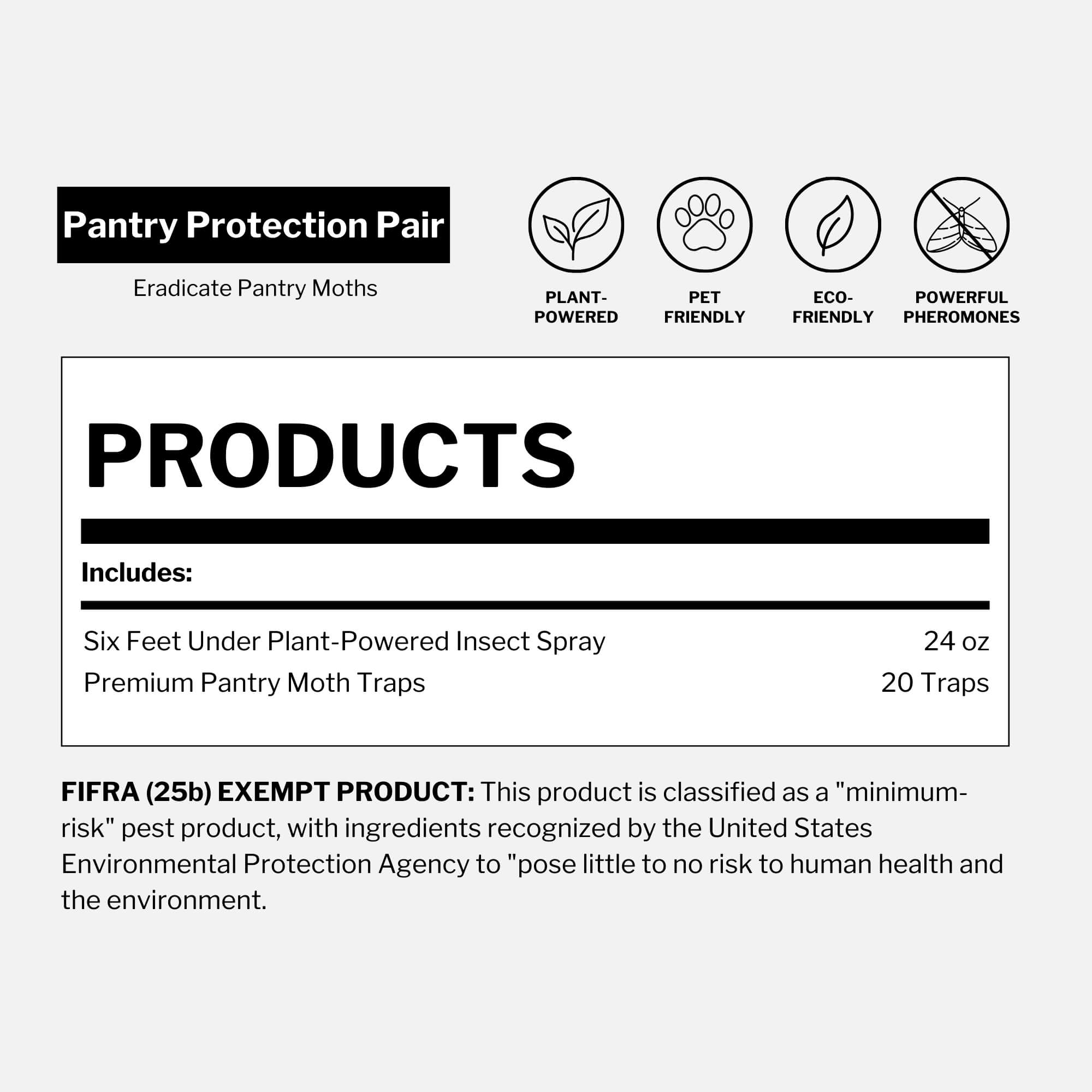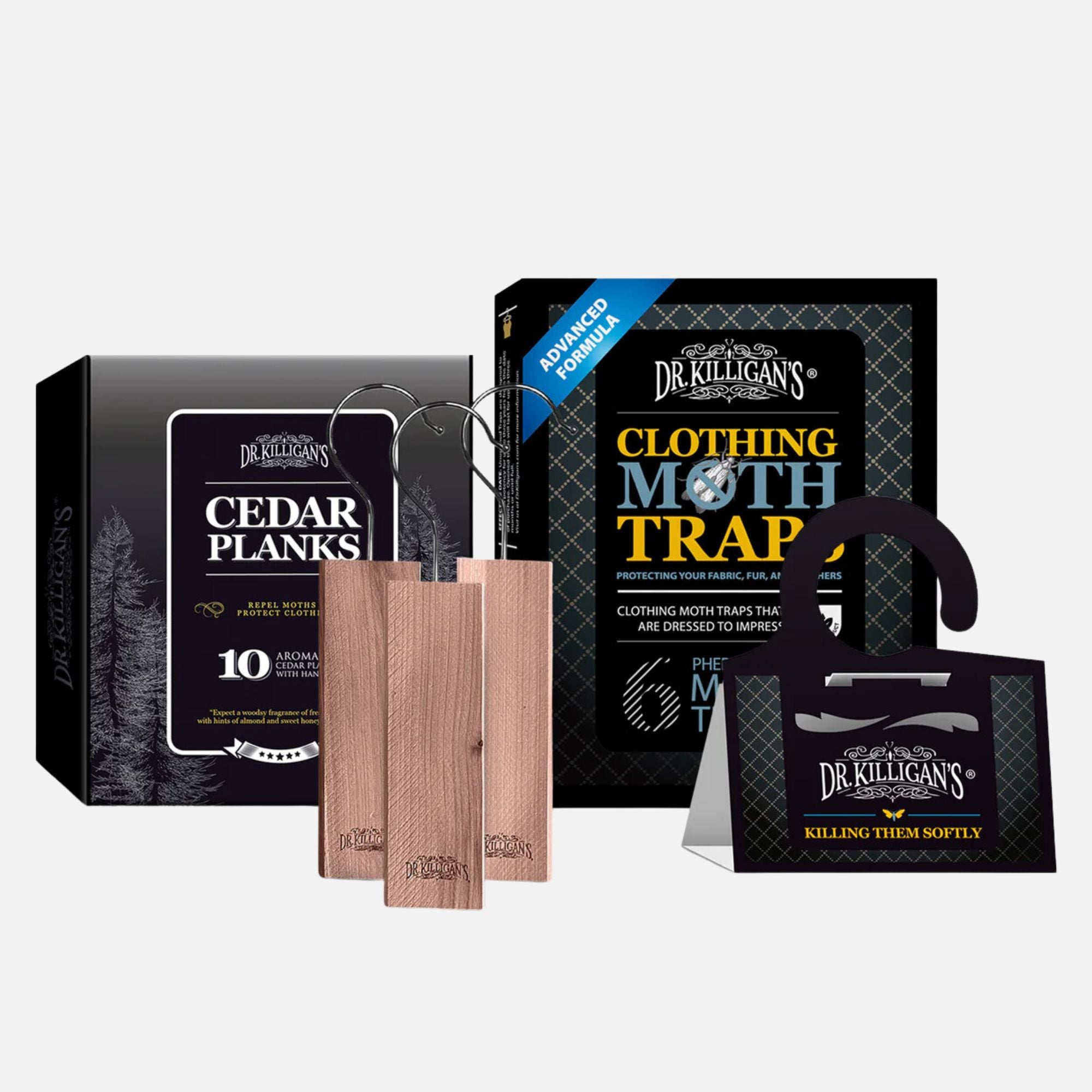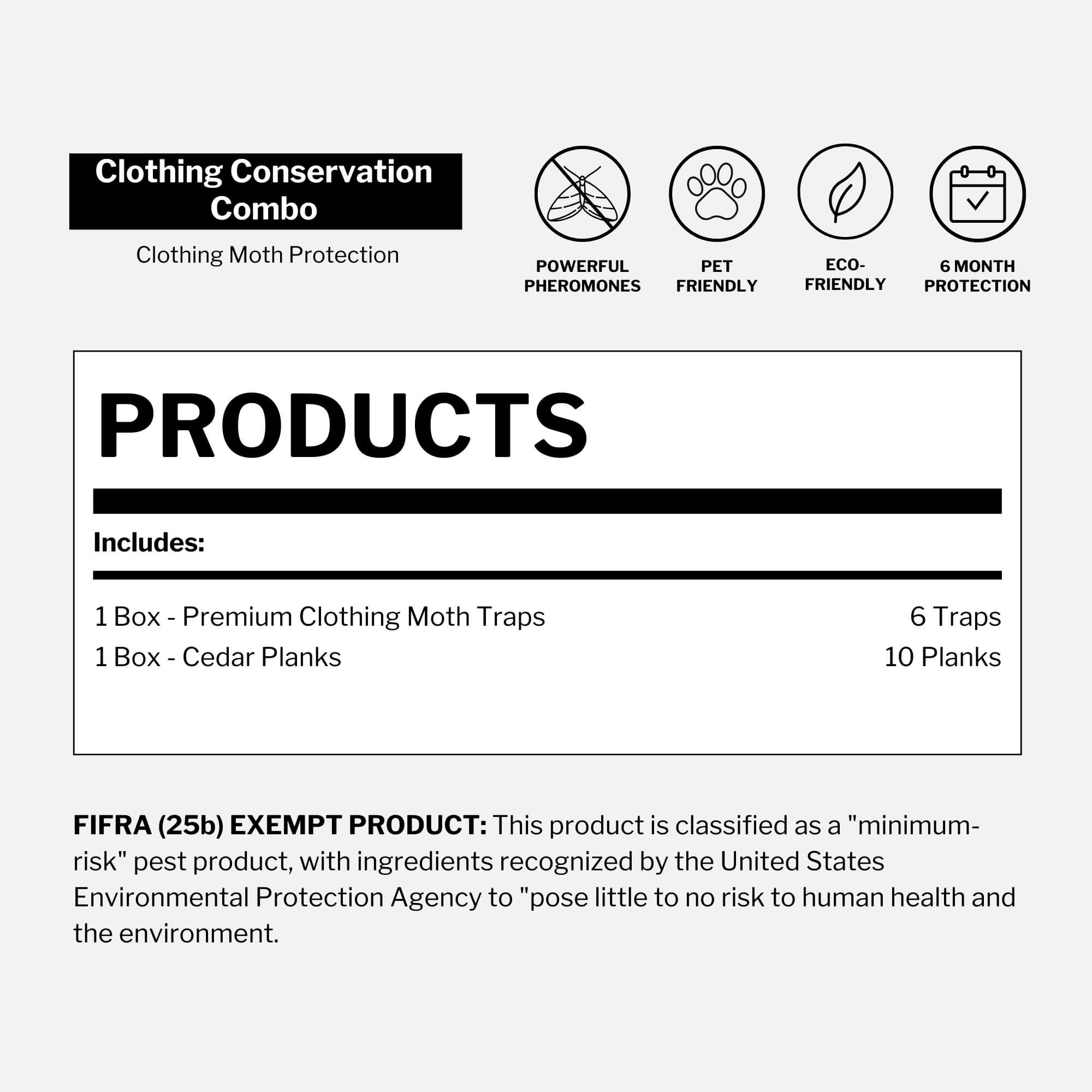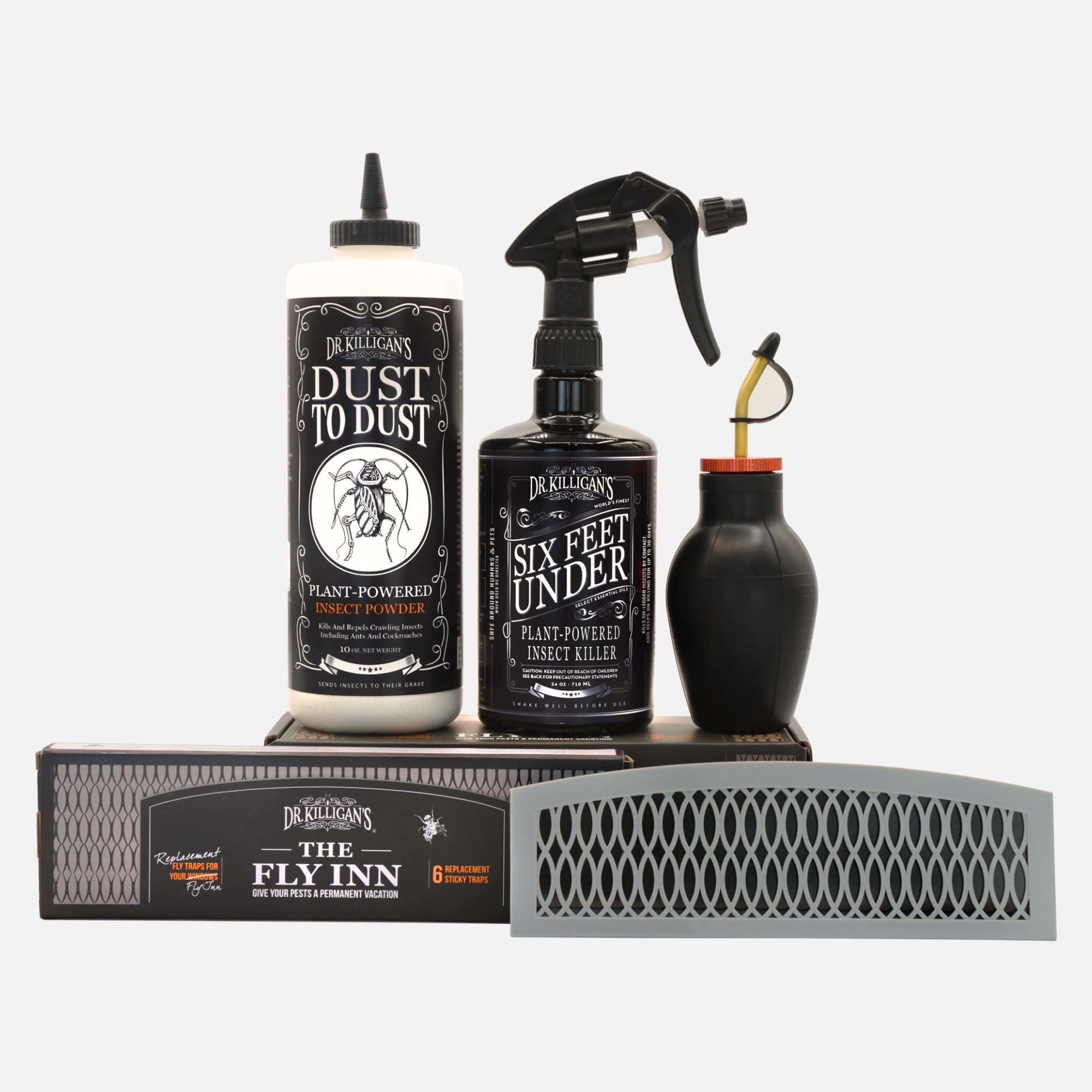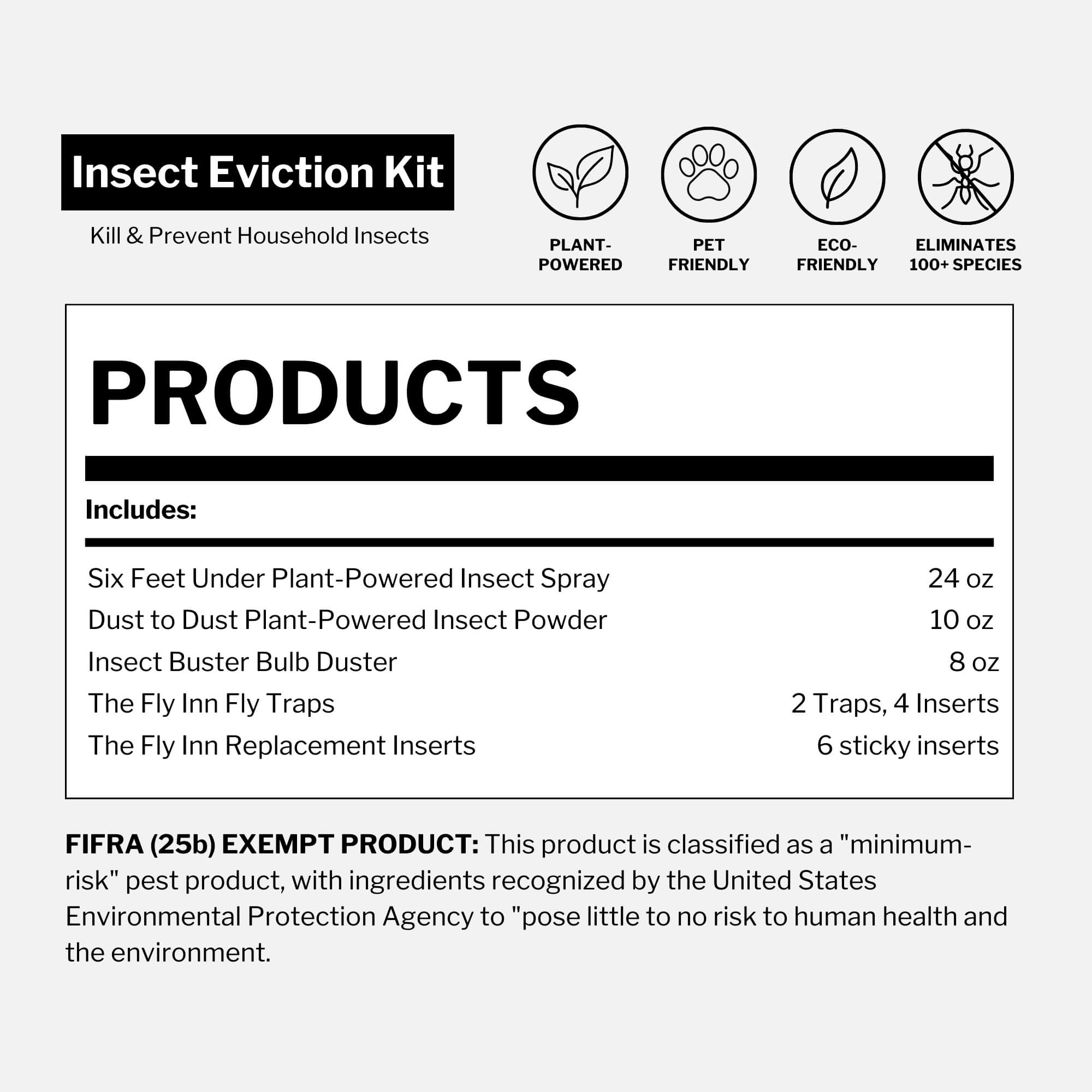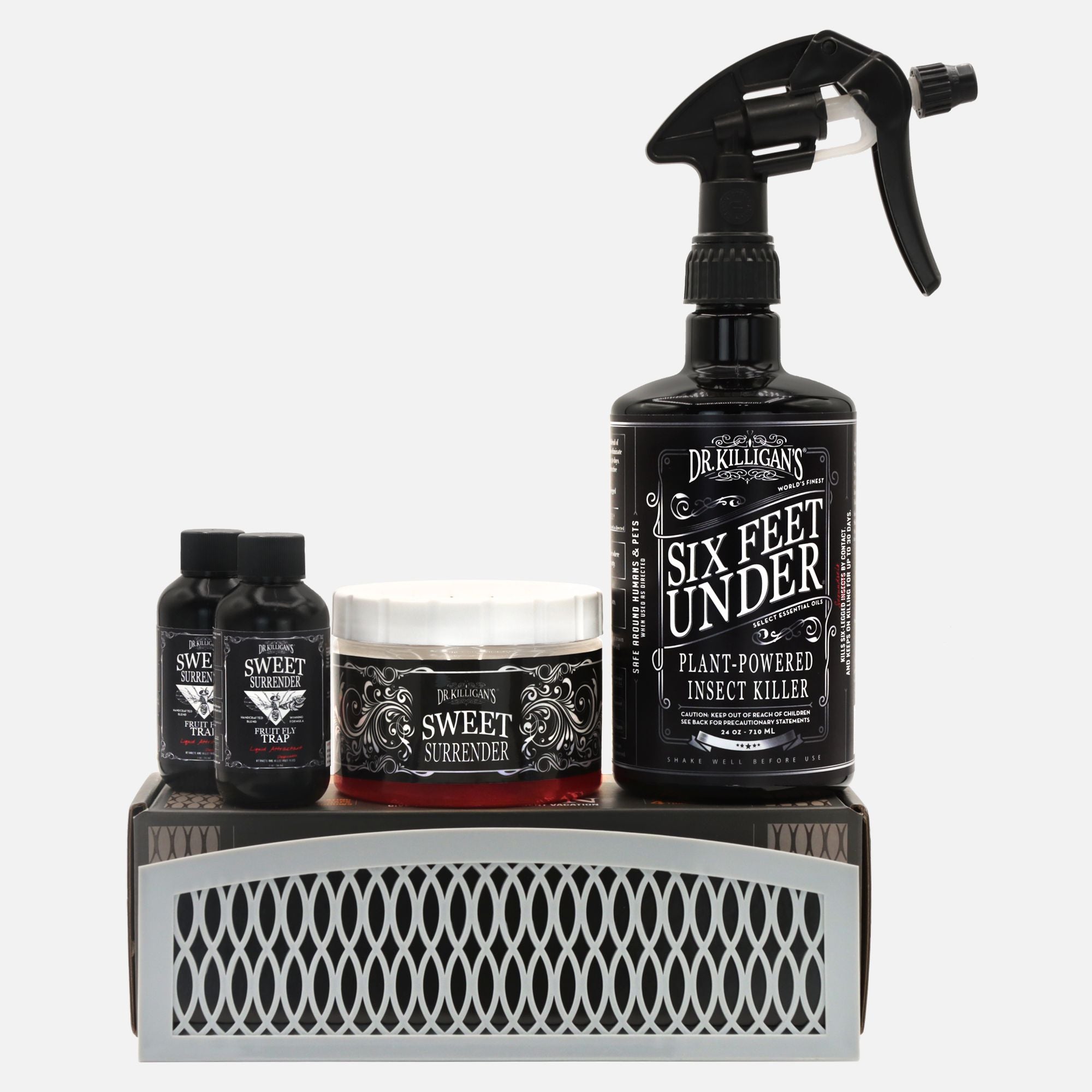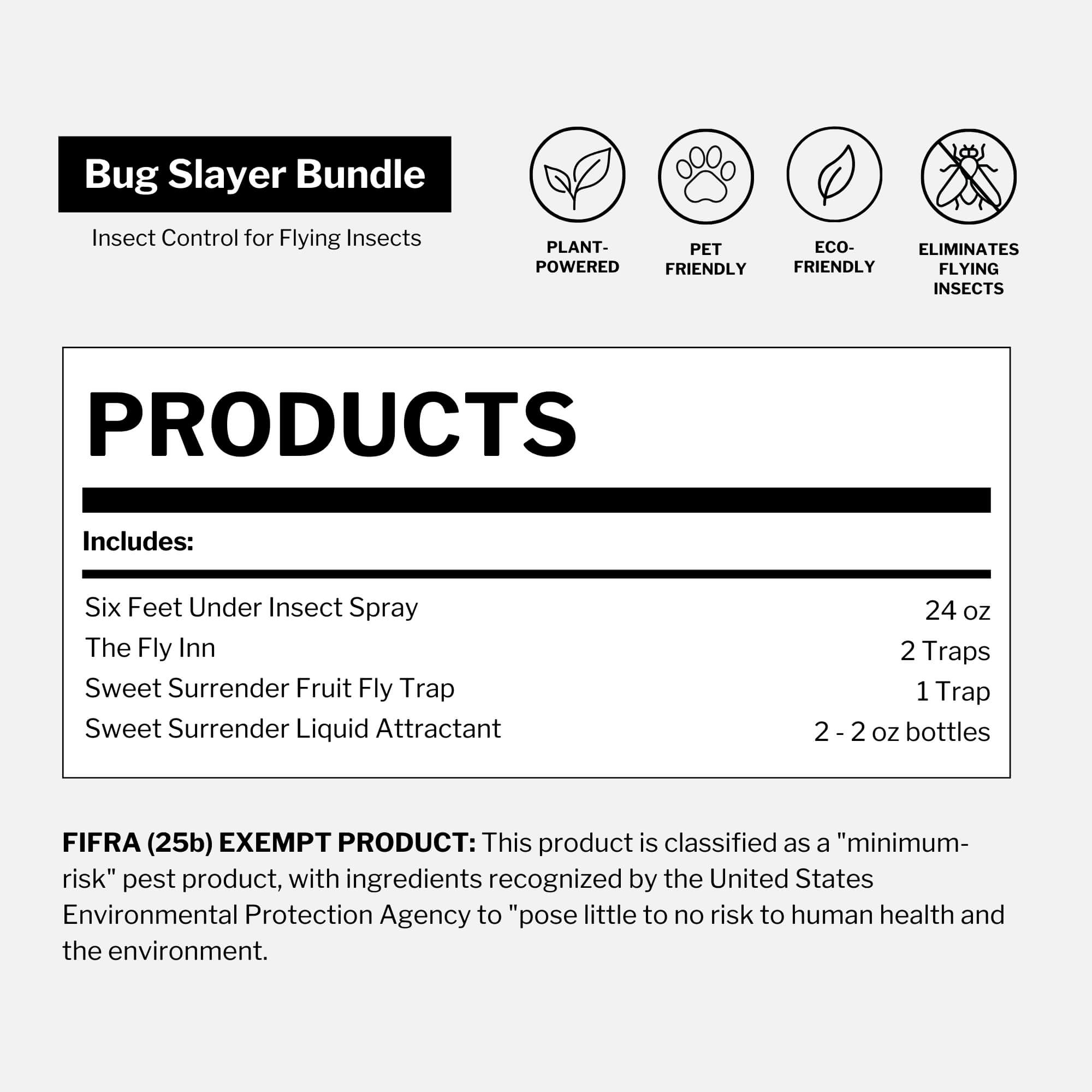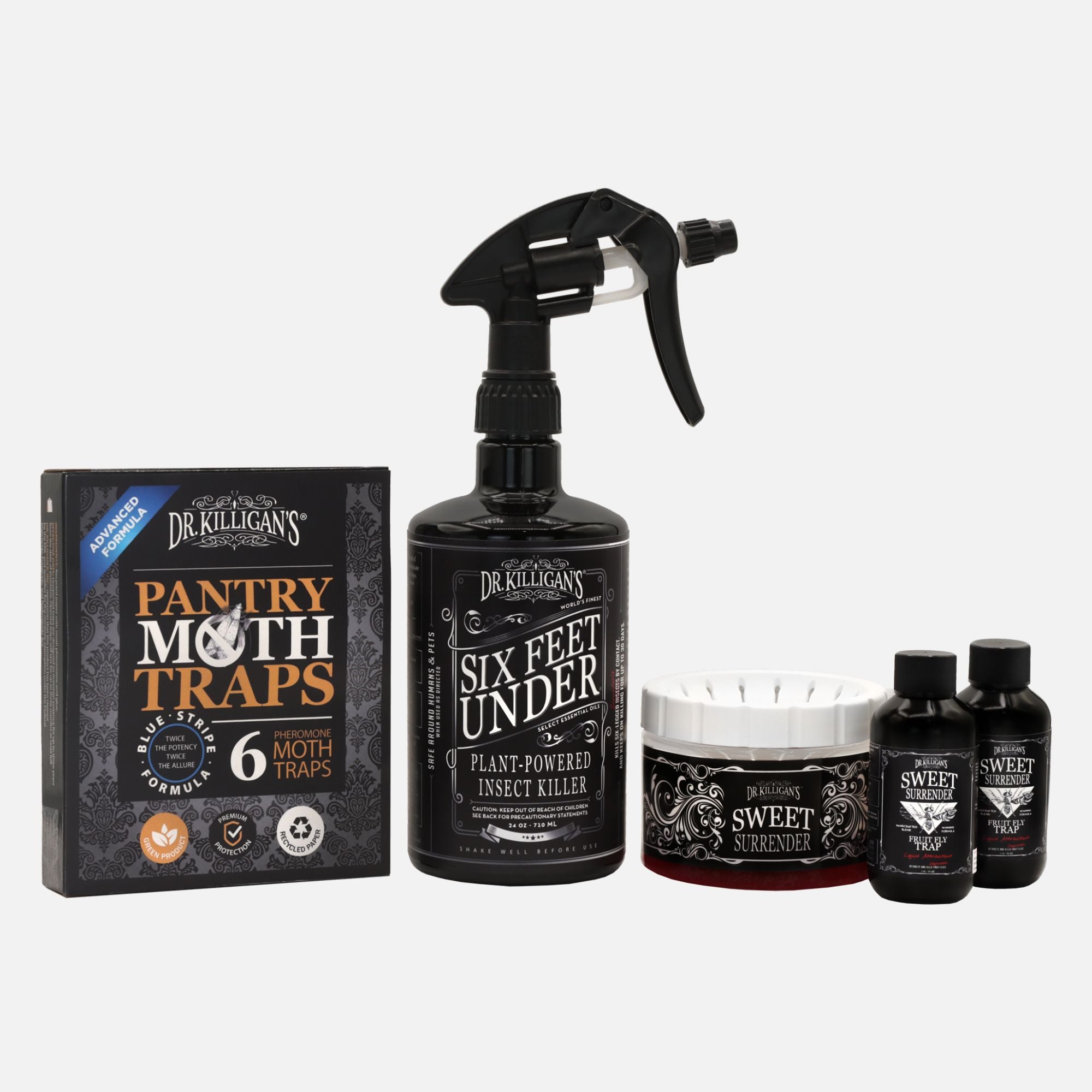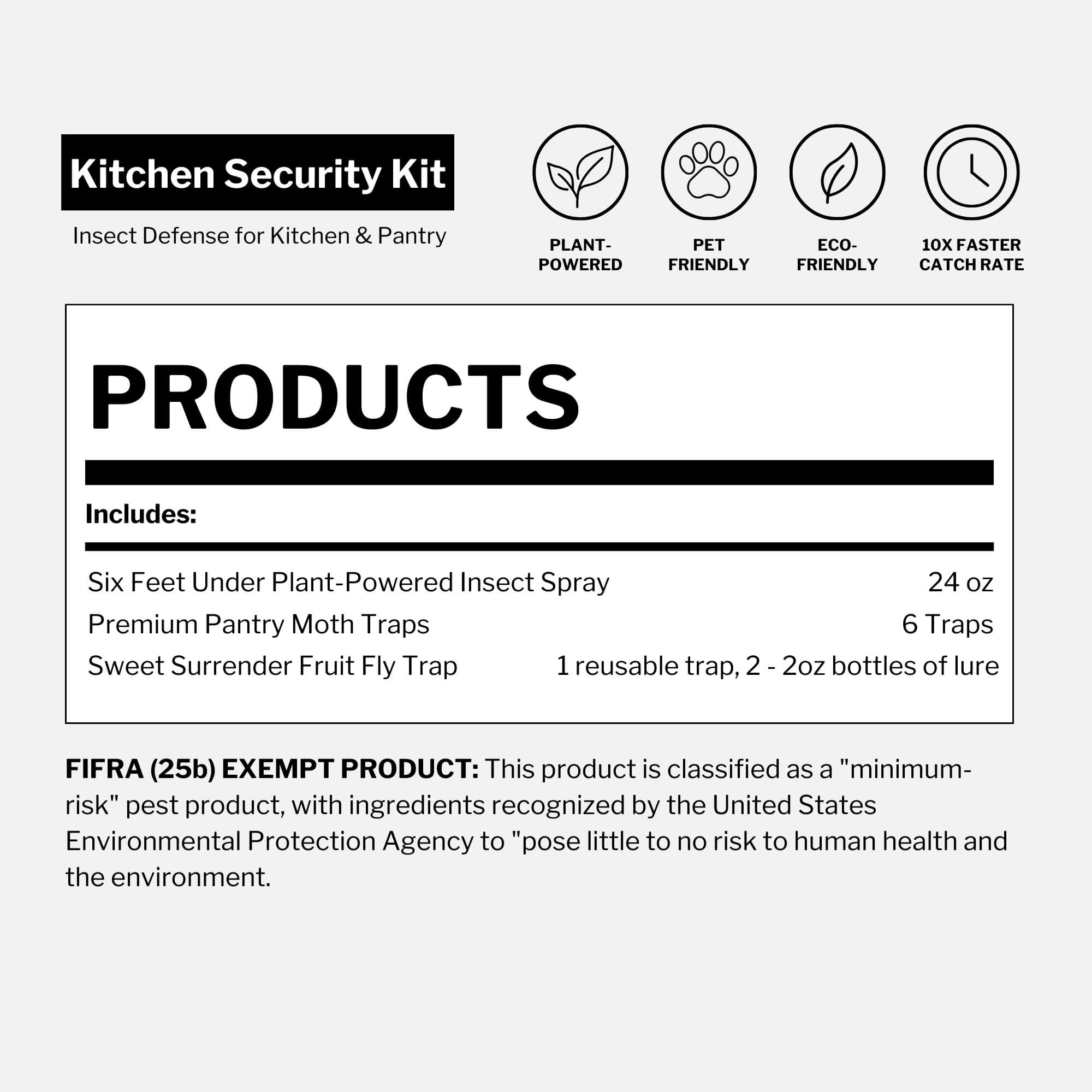As the new year approaches, it’s the perfect time to prepare your home for a pest-free 2025. Instead of the 12 Days of Christmas, we’re introducing the 12 Months of Pest Control—a proactive plan to keep bugs out of your domain all year long. Let’s get started.
January: Start fresh & flourish
Many pests are overwintering, making this the perfect time to inspect your home for tiny openings that have previously allowed these little creepy crawlies to go back and forth. No more free stays. Seal up their entrances now and hang up the “Closed for Winter” sign before spring travelers arrive.
Inspect for entry points:
Grab your wool cap and walk around your home's exterior to identify cracks, gaps or holes pests could use to infiltrate your space. Pay special attention to:

- Cracks in the foundation: Even tiny cracks can allow pests to enter.
- Gaps around windows and doors: Ensure weather stripping is intact and repair any damaged seals.
- Openings around vents and chimneys: Install screens or use caulk to close these gaps.
- Spaces along rooflines and eaves: Check for any openings allowing insects (or rodents) inside.
- Holes in window and door screens: A small tear can invite flying pests like flies or mosquitoes. Repair or replace screens as needed.
Seal the openings:
- Use caulk for small cracks and holes to create a tight seal.
- Apply steel wool for larger gaps, particularly around pipes, vents or utility lines, to block pests effectively and prevent chewing.
February: Declutter & defend
As the days grow longer and temperatures rise, pests like ants, spiders, flies and boxelder bugs stretch their tiny legs (and wings), ready to emerge from their winter hideouts. February is your chance to play the hero—clearing clutter, cutting off their hideaways and fortifying your space against these unwelcome guests.
Declutter storage spaces for pest protection:
-
Empty the space: Start fresh by clearing everything out—yes, everything. You never know what’s lurking in those forgotten corners.

- Sort your items: Channel your inner Marie Kondo. Organize items into three categories: keep, donate/sell and trash. If it doesn’t spark joy (or is damaged), it’s time to let it go.
- Deep clean: Now that the space is empty, give it a good scrub. Pay close attention to the corners, crevices and those sneaky spots pests love. Let Six Feet Under Plant-Powered Insect Spray be the friend by your side.
- Organize effectively: Bring in shelves, cabinets and clear plastic storage bins (pests can’t chew through these like they do cardboard.) Keep everything off the floor to discourage uninvited guests.
- Fortify your space: With pests starting to stir, this month is about disrupting their early plans. Declutter, deep clean and ensure no cracks or crevices provide pests an easy entryway.
Defend your home:
- Lay down Six Feet Under Barricade around your yard like a fortress wall, cutting pests off before they emerge from the soil.
- Puff Dust to Dust along the inside perimeter of storage spaces like basements and garages and in high-risk areas like pet bedding, behind furniture and along baseboards. If a bug walks across it, they’re a goner. The best part? As long as the powder stays in place, it remains active and ready to protect, providing a long-lasting barrier against overwintering pests trying to make a move.
March: Prune, protect & prevent
Spring is knocking, and pests like ants, ticks, mosquitoes and moths are waking up from their winter naps—hungry, sneaky and ready to invade your yard. This month is your chance to take charge by trimming, tidying and pest-proofing your way to a bug-free season. It’s time to roll out a 'No Vacancy' sign for unwanted pests.
Take charge of your yard:

- Prune bushes and shrubs near your home: Overgrown plants provide pests with shelter and a direct path to your foundation. Trim back bushes and shrubs, especially those touching your house, while plants remain dormant.
- Clear yard clutter: Rake up branches, leaves and debris from winter storms. Pests love to nest in these materials, so removing them makes your yard less inviting. Dethatch your lawn to promote healthy growth and eliminate pest-friendly hiding spots.
- Create a no-pest buffer zone: Keep plants, shrubs and mulch at least 18 inches from your foundation. This simple step removes the shelter and moisture that pests crave.
- Clean your gutters: Mosquitoes thrive in standing water. Clear debris from your gutters to keep water flowing and stop them from turning your gutters into a nursery.
Tip: While pruning, stay alert for fleas and ticks, especially if you live near wooded areas.
April: Destroy & deter
As spring takes hold, pests are busy building nests and seeking food sources. April is your chance to strike first—clearing nests, adjusting your lighting and planting pest-repelling greenery to send these unwanted guests packing. Consider this your pest prevention power move, with a touch of natural elegance.

Take control of your space:
- Destroy pest nests: Take a walk around your yard to spot early signs of nests like ant mounds, wasp hives or spider webs. Remove them carefully by knocking down nests, raking over ant hills and spraying pests with Six Feet Under. Pay close attention to hidden spots such as under eaves, along fence lines or in the corners of sheds and garages.
Light it right to keep bugs out:
- Change your lights: Swap standard bulbs for high-pressure sodium vapor or halogen lights. These bulbs emit a less-attractive spectrum to flying insects—keeping the buzz where it belongs (in conversation, not bugs).
- Reposition outdoor lights: Move lights away from doorways and windows to reduce insects gathering near entry points. Use motion-sensor options or position lights farther out in the yard to draw bugs away from your home’s entrances.
Plant your pest prevention:
- After the last frost (plus a week), plant marigolds, citronella, rosemary and basil near your home’s entrances to deter bees, mosquitoes and flies.
- To support bees (your friendly pollinators), plant flowers like lavender, sunflowers and wildflowers in other parts of your yard—away from high-traffic areas. Bees will thank you with buzzing approval.
May: Sparkle & shield
Spring cleaning isn’t just about sparkle—it’s about uncovering and evicting those freeloading pests hiding in forgotten corners. Crumbs, clutter and neglected nooks? That’s like rolling out the red carpet for bugs. This season, roll up your sleeves, reclaim your space and show pests the door—because a clean home isn’t just tidy, it’s pest-free.
Refresh your pantry:
A clean, organized pantry keeps food fresh and keeps pests out. Follow these steps to reclaim your kitchen storage:
- Toss expired or stale foods: Check all packaged goods for expiration dates, damaged packaging or signs of pantry pests like webbing or larvae. If in doubt, throw it out.
- Wipe down shelves: Use warm soapy water to clean shelves, corners and inside cabinets. This eliminates crumbs, spills and residues that attract pests. Follow up with a spray of Six Feet Under to stop any stragglers.
- Vacuum hidden crevices: Use a handheld vacuum or crevice tool to suck up crumbs lurking in hard-to-reach spots—like behind jars, in cabinet corners or along pantry edges. Think of it as a mini treasure hunt, minus the gold.
- Seal your supplies: Transfer grains, flours and cereals into airtight glass or plastic containers to keep pests like pantry moths from sneaking in or spreading.
-
Set a Pantry Moth Trap: Place a trap on top of your cupboard or fridge to monitor for winged intruders. Pro Tip: If pantry pests have you on edge, set multiple traps in high-risk areas to stay ahead of the game.

Deep clean neglected areas:
Pests thrive in dark, untouched spaces. A thorough clean can send them packing:
- Move and vacuum furniture: Shift couches, chairs and large appliances to vacuum underneath and behind. Dust, crumbs and moisture often collect in these hidden spots—prime real estate for pests.
- Target baseboards and corners: Use a vacuum with a crevice tool to reach into tight areas along walls and corners where bugs like to hide.
- Tackle overlooked spots: Dust behind electronics, clean under rugs and wipe down the undersides of tables or shelves where cobwebs gather.
- Freshen up hidden crevices: Lightly puff Dust to Dust along baseboards, under furniture and behind appliances to eliminate hiding spots. This protective layer targets pests drawn to spring warmth and overlooked areas. Note: For precise application, use The Insect Buster.
Wash and store seasonal linens and clothing:
- Launder: Wash blankets, curtains and other fabrics to eliminate dust and pests.
- Pack away wool and cashmere: Store sweaters, scarves and keratin-rich clothing in airtight plastic bins. Tuck in Dr. Killigan’s Cedar Planks to keep moths away while adding a woodsy, fresh scent to your wardrobe.
June: Stay sharp & swat smart
Summer’s heating up, and so is pest activity. Mosquitoes are buzzing, ants are marching and flies are throwing unwanted house parties. Oh, and let’s not forget the wasps and yellow jackets—they’re already scouting for their next backyard hangout. June is all about staying on top of your game and keeping pests from turning your home into their summer playground.
Stay ahead with these simple moves:
-
Water smart: Water plants regularly, but don’t let water pool in saucers, buckets or forgotten pots—mosquitoes love standing water for their nurseries.

- Eliminate the crumbs: Summer barbecues and snacks mean spills happen. Clean up food crumbs and sticky spots quickly to keep flies and ants from joining the party.
- Garbage patrol: Take out the trash regularly, close garbage can lids tight and ensure bins are cleaned to avoid attracting pests like flies and wasps.
- Swat them before they enter: Spray Six Feet Under around doors, windows and other entry points to stop ants, flies and other pests before they sneak inside.
- Reinforce your barrier: Reapply Six Feet Under Barricade to maintain your protective perimeter. Its 90-day coverage keeps pests from invading your yard all summer—because your lawn is for lounging, not bug block parties.
July: Breeze, block & banish
You’ve done the work—now it’s time to kick back, sip something cold and enjoy summer evenings pest-free. July focuses on keeping things cool, breezy and easy, with just a few quick checks to stop bugs from sneaking into your summer downtime.
Keep the summer vibes flowing:

- Fan the fun: Keep ceiling fans or floor fans running. Flying pests like mosquitoes and flies hate moving air—it’s your summer breeze, but their worst nightmare.
- Block the bugs: A quick spray of Six Feet Under around entry points like doors, windows and vents creates a protective barrier, so you can lounge without swatting unwanted guests.
- Banish the bacteria: The summer heat and humidity can turn food buildup in your kitchen sink or garbage disposal into a bug buffet, attracting gnats, drain flies and fruit flies. Run hot water, use a garbage disposal cleaner or try a mix of vinegar and baking soda to keep it fresh and pest-free.
August: Stop & secure
Late summer is pantry moth prime time. These sneaky invaders thrive in warm temperatures, multiplying faster than expected and turning your kitchen staples into a buffet. August is about stopping them before they take over—because nothing ruins your snacks like unexpected guests.
Win the pantry moth battle:
Summer heat is pantry moth prime time. If you tidied up in May, it's the perfect moment to step up your defenses as the heat brings pantry moths out in droves.

- Refresh traps: Replace Dr. Killigan’s Pantry Moth Traps to monitor for any infestations. Prevention remains your best weapon.
- Inspect your staples: Check grains, cereals and flours for webbing, larvae or damaged packaging. Toss infested items immediately.
- Reinforce your storage: Re-seal dry goods in airtight containers to block new infestations—pantry moths thrive in cardboard and flimsy plastic bags.
- Target trouble spots: Use Six Feet Under in pantry cracks, corners and along shelves to eliminate lingering stragglers before they spread.
If you tidied up in May, now’s the time to double down as the heat brings pantry moths out in droves. Prevention starts with traps and airtight storage—your best defense against these relentless invaders.
September: Fortify & focus on fall defenses
Fall’s cooler weather sends pests like stink bugs, boxelders, fruit flies and carpenter bees into a frenzy to find food and shelter. It's time to reinforce your defenses, tackle seasonal pest hot spots and prevent fall infestations.
Focus on fall pest prevention:

- Seal carpenter bee holes: Empty galleries from summer are prime real estate for overwintering bees. Fill them with wood putty or caulk to prevent further damage.
- Repel stink bugs, Asian ladybugs, cluster flies and boxelder bugs: These pests congregate on sunny walls and near entry points. Use Six Feet Under to create a protective barrier around windows, doors and foundations.
- Stop fruit flies in their tracks: Harvest season brings ripe produce—and fruit flies.
- Store fruits and vegetables in the refrigerator or airtight containers.
- Remove overripe or fermenting produce promptly.
- Place Sweet Surrender Fruit Fly Traps near kitchen counters, trash cans and compost bins to catch these tiny intruders before they multiply.
- Reinforce your defenses: Check for wear and tear on previously sealed gaps, weather stripping and screens. Fall’s chill is an open invitation for pests—don’t let them RSVP.
Yard cleanup for winter:
- You tackled yard clutter in spring, but fall debris offers pests a fresh opportunity to overwinter. Remove leaves, woodpiles and garden clutter to eliminate their hiding spots before temperatures drop.
- Don’t forget to reapply Six Feet Under Barricade this month. Reinforcing your defenses now will keep pests like stink bugs and boxelders from sneaking indoors as temperatures drop.
October: Ward off & winterize
With cooler days settling in, it’s time to pull out your winter wardrobe and ensure it’s free of unwanted guests—thanks to your earlier pest-prevention efforts. October focuses on fortifying your protections and prepping your home to stay bug-free as pests settle in for winter. After all, the only thing burrowing into your cozy knits this season should be you.
Ward off and winterize:

- Inspect your winter clothes: As you unpack sweaters, scarves and woolens, check for any signs of clothing moth damage, like holes or webbing. If you followed spring tips, your items should emerge unscathed. (Cue a victory lap around your cedar-scented closet.)
- Replenish cedar protection: Refresh Dr. Killigan’s Cedar Planks and spray Cedar Ward on storage bins, closets and drawers to keep pests at bay and your woolens smelling woodsy-fresh.
- Launder before storing summer clothes: Wash and dry summer garments thoroughly before storing them in airtight bins. Adding a few Cedar Planks ensures pests stay away—because nothing says “ready for winter” like a moth-free wardrobe.
November: Stock, safeguard & stay ahead
As temperatures drop, your home becomes the perfect haven for pests seeking food, warmth and shelter. This month, focus on restocking your defenses and safeguarding your space—because no one invited bugs to the holiday feast.
Stock up and refresh your arsenal:
- Replenish traps and barriers: Replace Dr. Killigan's Pantry Moth Traps and Cedar Canisters to ensure pests don’t settle in for winter. Add Clothing Moth Traps to monitor for winged intruders in closets and storage spaces. Slide a fresh trap into your The Fly Inn Flying Insect Trap and monitor high-traffic areas.
-
Refresh cedar protection: Spray Cedar Ward to extend the moth-repelling power of Cedar Planks and Cedar Canisters in closets, storage bins and drawers.

- Puff Dust to Dust in key areas: Focus on overwintering hot spots like basements, attics and under appliances. This long-lasting layer creates a protective barrier, stopping pests cold through the winter months.
- Create a perimeter barrier: Use Six Feet Under on door frames, window sills and entry points to stop pests from sneaking inside.
December: Reflect, restock & repel
As the year wraps up, pests remain relentless. Reflect on your victories, refresh your defenses and prepare for a bug-free 2025—all while keeping holiday pests out of your home.

- Inspect your tree and greenery: Real Christmas trees, wreaths and garlands can harbor aphids, spiders and other bugs. Shake greenery outside before bringing it indoors, then lightly spray with Six Feet Under Holiday Edition for festive, bug-free décor.
- Replenish for next year: Stock up on Dr. Killigan’s pest control essentials, from Dust to Dust and Six Feet Under to Cedar Ward and traps. Think of it as a stocking stuffer for your future self.
- Review and plan ahead: Did pests find any weak spots this year? Note areas to address early in 2026 for a stronger start to a bug-free year.
Pro Tip: December is the perfect time to refresh your pest control tools. Take advantage of seasonal savings and set yourself up for success in the new year.
Conclusion
By following this 12-month pest control plan, you’ll stay one step ahead of pests all year long. With knowledge, preparation and Dr. Killigan’s plant-powered solutions, you can enjoy a home free of pantry moths, mosquitoes, cockroaches and more—no matter the season. Follow this plan, and pests won’t stand a chance in 2025—because every month brings you closer to a pest-free haven!
Let’s make 2025 your year of pest-free living.




